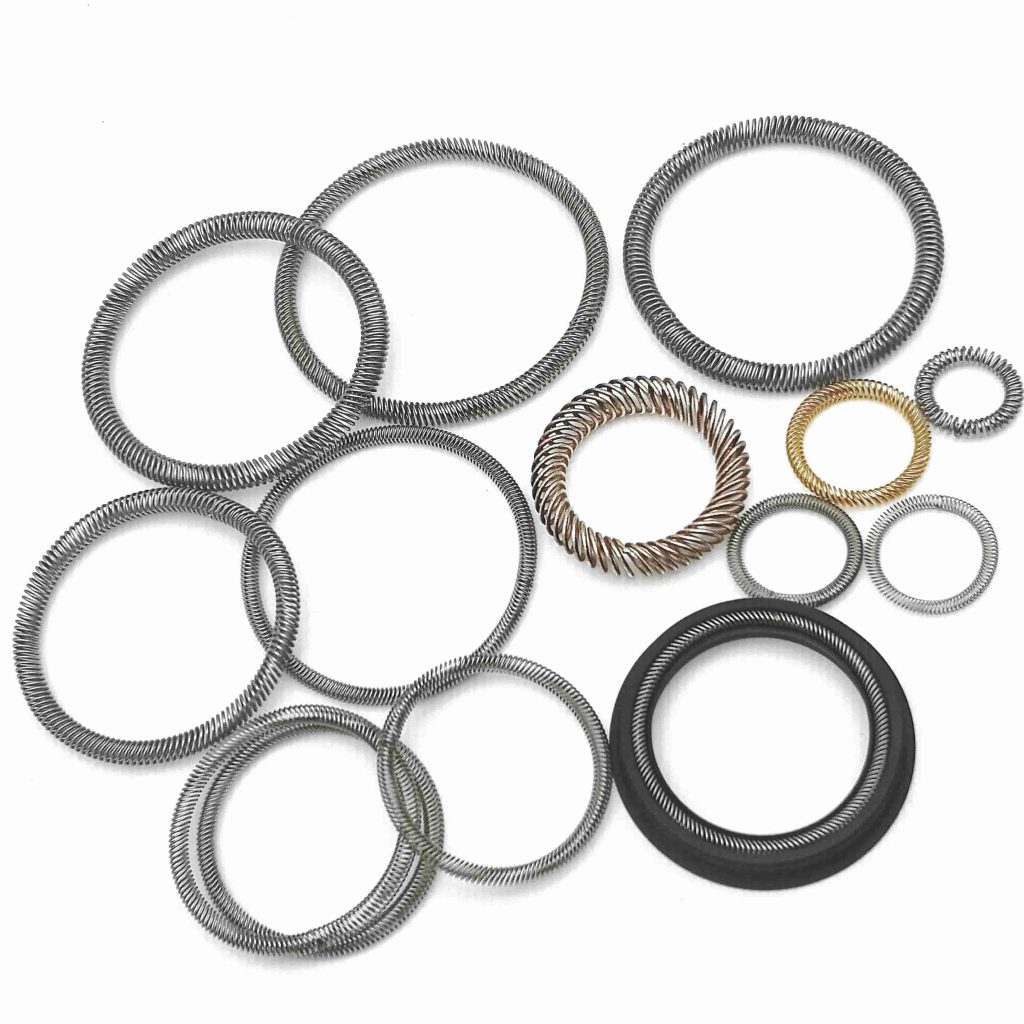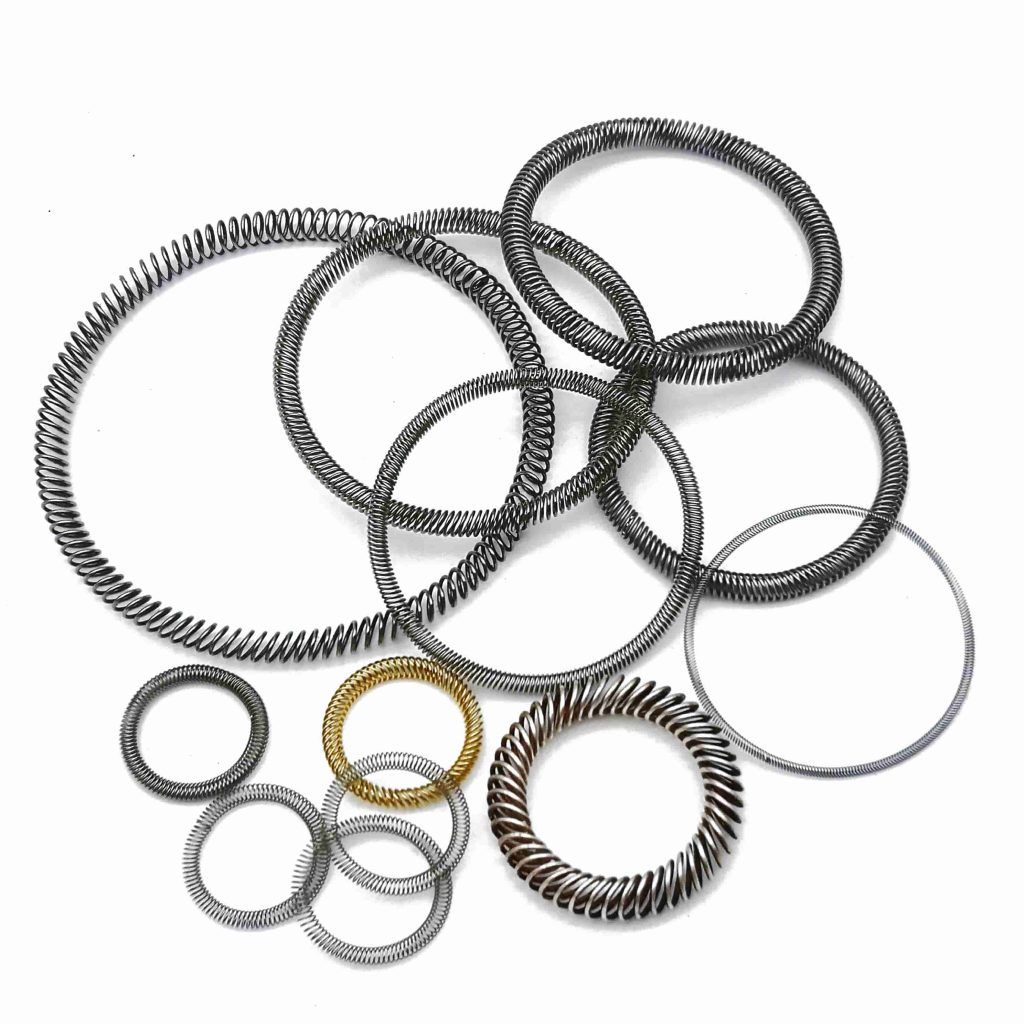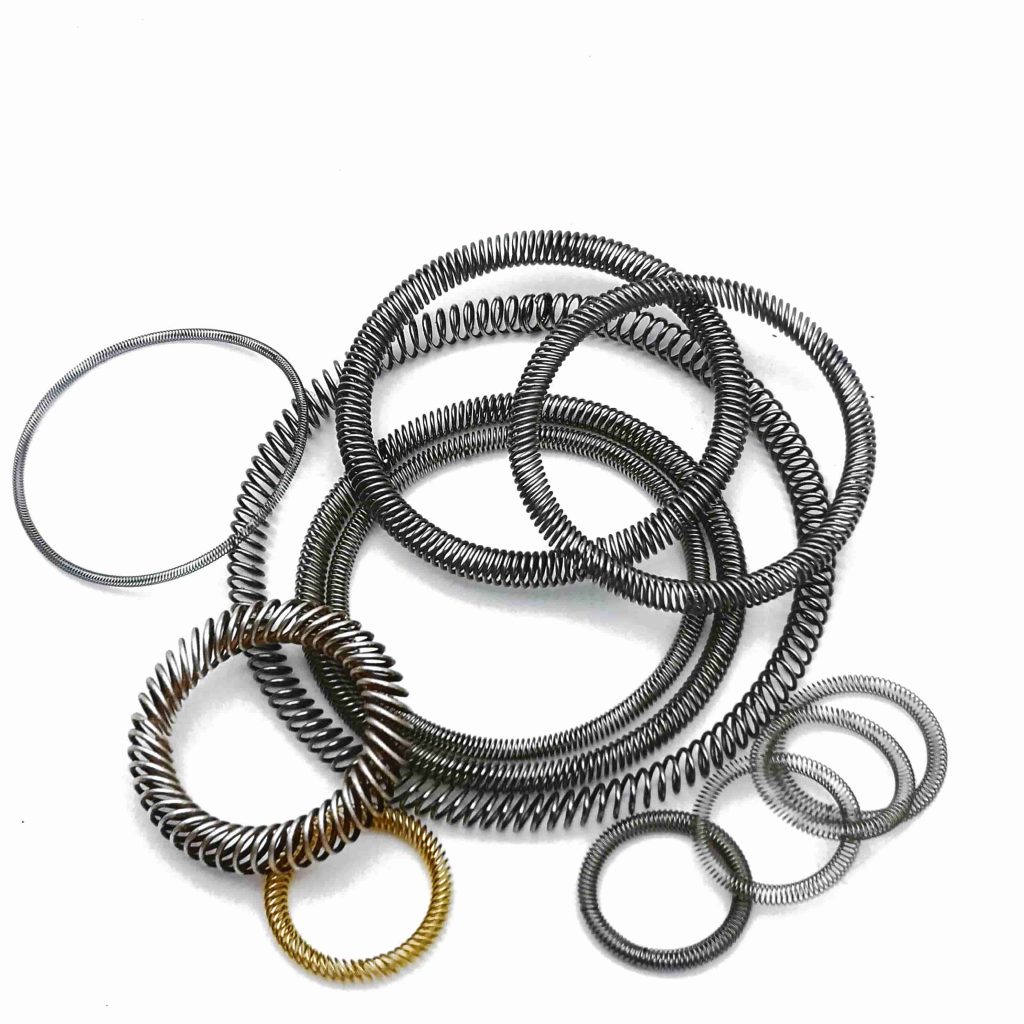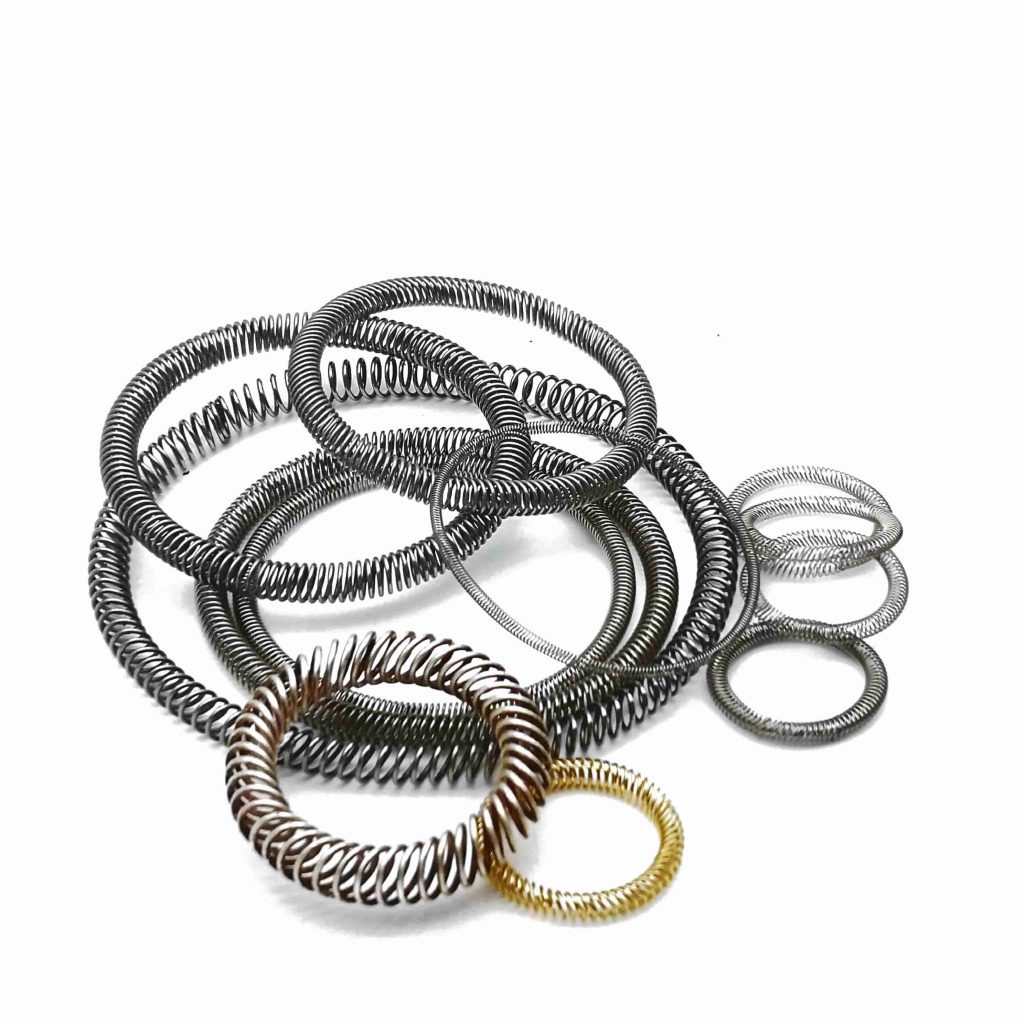Canted coil seal springs(slant coil seal springs) are specialized components used across a wide range of industries for their exceptional ability to provide reliable sealing, electromagnetic interference (EMI) shielding, electrical conductivity, and mechanical fastening. These springs have a unique design, characterized by their elliptical or oval cross-section, which sets them apart from traditional round springs. Their versatility and performance make them highly desirable in applications requiring consistent sealing, conductivity, and mechanical force distribution.

Canted Coil Seal Springs
Canted coil seal springs are precision-engineered components designed for use in applications requiring controlled force, conductivity, and sealing. Their unique design features coils that are canted (angled), which provides multiple points of contact. This feature ensures excellent performance in terms of load distribution, conductivity, and sealing. The springs are commonly used in environments that demand high reliability, such as aerospace, medical devices, automotive, and electronics industries.
Canted coil seal springs are used in a variety of industries and applications where precision, reliability, and durability are paramount. Some of the primary applications include:
Canted coil seal springs are commonly used in spring-energized seals. In these applications, the spring helps maintain a consistent force on the seal, ensuring a tight, long-lasting seal even in the presence of temperature fluctuations, pressure changes, and wear. These seals are frequently used in industries such as aerospace, automotive, and oil and gas, where maintaining a leak-proof seal is critical.
In electronic devices, EMI can cause significant interference, leading to malfunctions or performance degradation. Slant coil seal springs provide effective EMI shielding, ensuring that sensitive components are protected from external electromagnetic interference. Their ability to maintain consistent contact with the surface enhances their performance as EMI shields, particularly in high-frequency applications.
Canted coil seal springs are excellent choices for applications that require electrical conductivity. The multiple contact points along the spring allow for a consistent electrical connection, making them ideal for use in connectors, sensors, and other electrical components where reliable conductivity is crucial.
In addition to sealing and conductivity, slant coil seal springs are also used for mechanical fastening. Their unique coil design allows them to act as mechanical fasteners that provide holding, latching, or locking functions. They are commonly used in connectors and fastening systems, offering secure, vibration-resistant connections.

Canted coil seal springs offer several advantages that make them a preferred choice in critical applications. These advantages include:
The multiple contact points and flexible design of slant coil seal springs ensure that they maintain consistent contact with mating surfaces, even in applications where surface irregularities or uneven surfaces are present. This results in superior sealing performance and helps prevent leaks, making these springs ideal for sealing applications in harsh environments.
Canted coil springs are designed to resist fatigue, compression set, and wear, which means they maintain their performance over thousands of cycles. This makes them ideal for dynamic applications where long-term reliability is essential.
Many slant coil seal springs are made from materials that offer excellent resistance to chemicals, making them suitable for use in environments where they may be exposed to corrosive substances. These springs can be coated or made from materials such as stainless steel or beryllium copper to withstand harsh chemical environments.
Canted coil seal springs are suitable for both static and dynamic applications, offering flexibility across a wide range of use cases. Whether used in stationary sealing applications or in dynamic systems with continuous movement, these springs provide reliable performance.
The unique design of canted coil seal springs minimizes the risk of shedding or premature degradation. This is particularly important in industries such as medical devices and food processing, where contamination could pose significant risks.

The performance and durability of slant coil seal springs largely depend on the materials used in their construction. The most common materials include:
Stainless steel is one of the most popular materials for canted coil seal springs due to its excellent combination of strength, corrosion resistance, and durability. It is often used in applications where the spring may be exposed to harsh environmental conditions, including high temperatures and corrosive chemicals.
Beryllium copper offers excellent conductivity and is often used in applications where electrical performance is critical. It also provides good corrosion resistance and fatigue strength, making it ideal for use in EMI shielding and electrical connectors.
Inconel, a nickel-chromium-based superalloy, is used in applications that require extreme heat and corrosion resistance. It is commonly found in aerospace, chemical processing, and high-temperature industrial applications.
Phosphor bronze is a copper alloy that offers good corrosion resistance, especially in marine environments. It is used in applications where the spring may be exposed to moisture and other corrosive elements.
The manufacturing process of canted coil seal springs is complex and requires precision to ensure optimal performance. The process generally involves the following steps:
The first step is selecting the appropriate material based on the application’s requirements, including environmental conditions, load capacity, and desired performance characteristics.
The selected material is then coiled into the characteristic canted shape using specialized machines. The coils are carefully formed to ensure consistent spacing and alignment, which is critical for achieving the spring’s flat force curve and multiple contact points.
After coiling, the springs undergo heat treatment to enhance their strength and flexibility. Heat treatment processes such as annealing or tempering are used to relieve internal stresses and improve the spring’s overall mechanical properties.
Finally, the springs may undergo surface treatments such as plating, coating, or passivation to improve corrosion resistance, wear resistance, or conductivity. Common finishes include tin, nickel, or gold plating, depending on the specific application.

While canted coil seal springs offer numerous benefits, there are several important considerations to keep in mind:
Canted coil seal springs require careful design and precision engineering to ensure optimal performance. Factors such as load, deflection, and material selection must be carefully considered during the design phase.
Installing canted coil seal springs can be more complex than traditional spring designs. Specialized tools or techniques may be required to ensure proper installation, especially in tight or confined spaces.
Compared to some other types of springs, slant coil seal springs may have a higher initial cost due to their complexity and the materials used. However, their long-term durability and performance often offset the initial investment.
Canted coil springs are an innovative and versatile solution for industries requiring high-performance sealing, electrical conductivity, and EMI shielding. Their unique canted design provides multiple points of contact, offering consistent force, excellent conductivity, and reliable sealing performance. While their design may be more complex and expensive than traditional springs, the long-term benefits of durability, versatility, and reliability make them an excellent choice for critical applications across various industries.
Whether used in aerospace, medical devices, electronics, or automotive applications, canted coil seal springs provide a robust and reliable solution for sealing, fastening, and conductivity challenges.